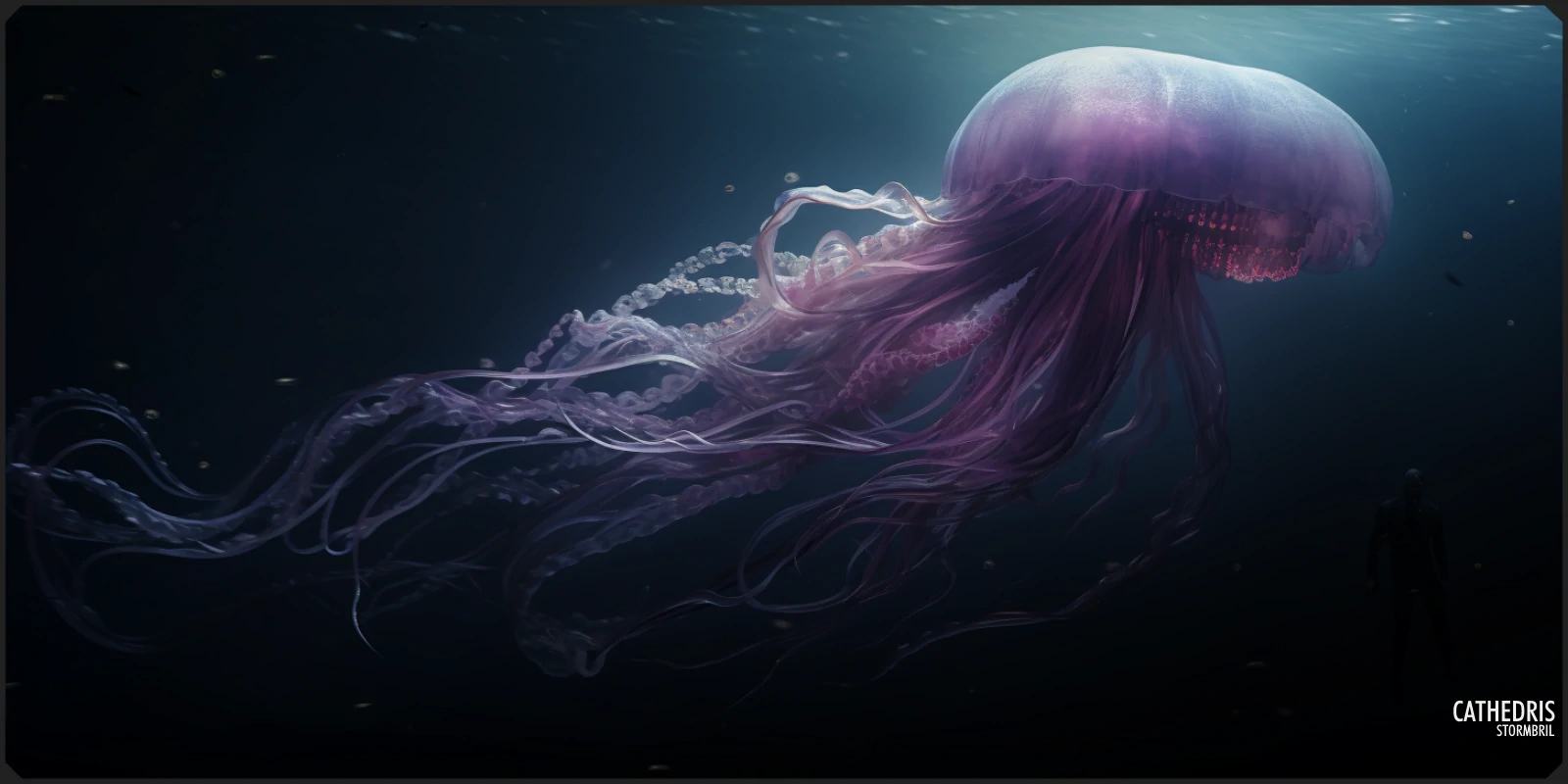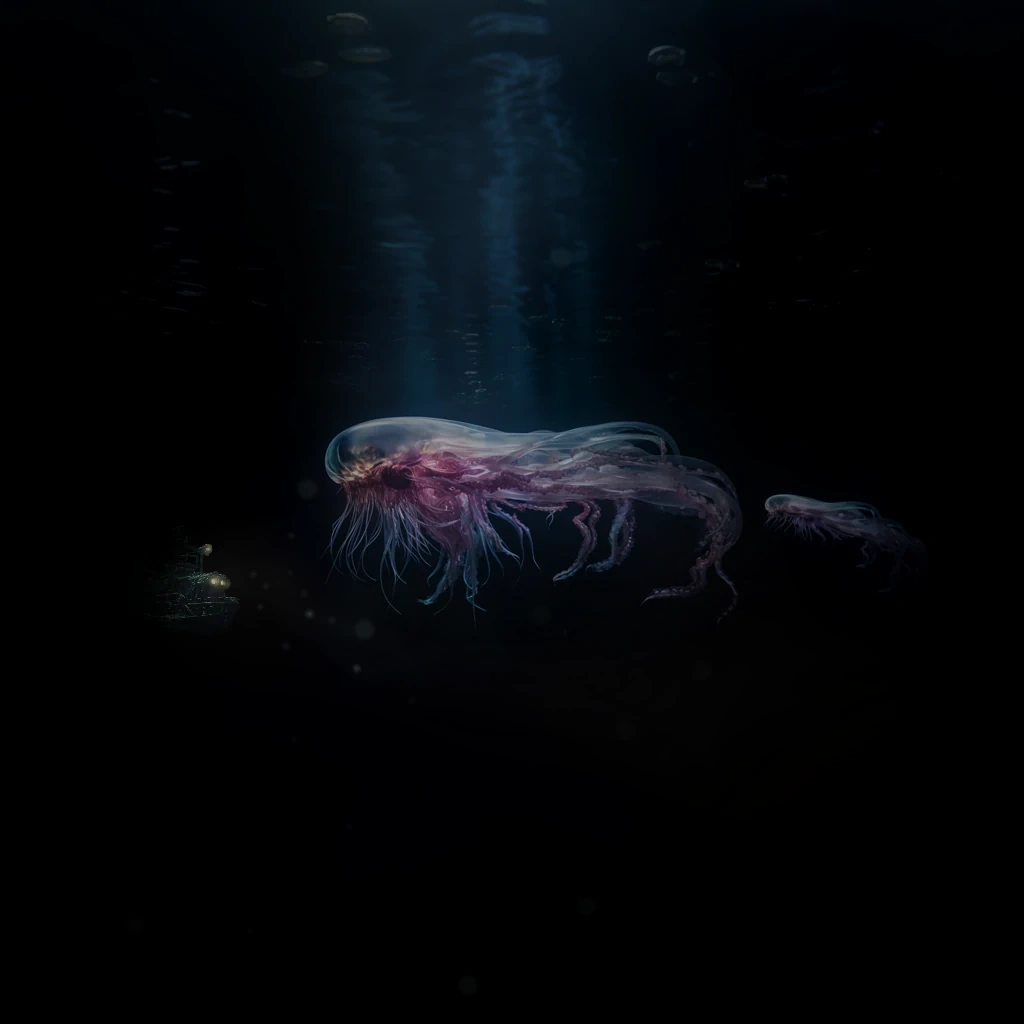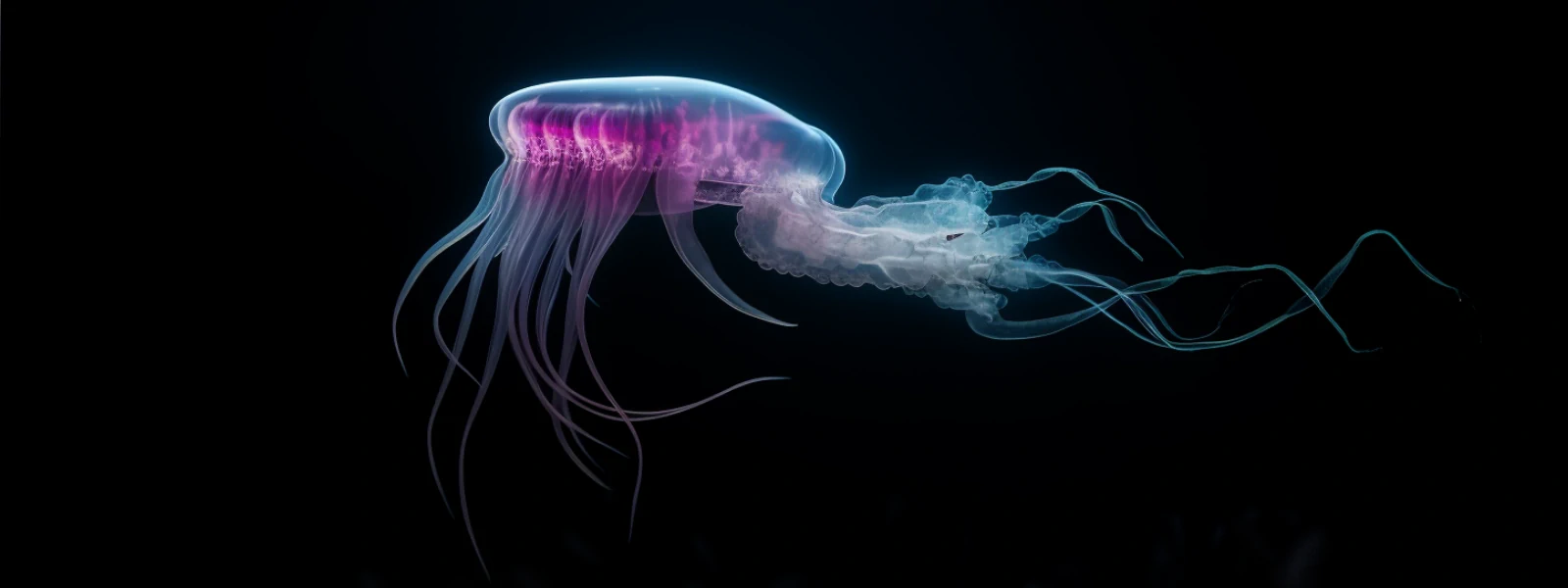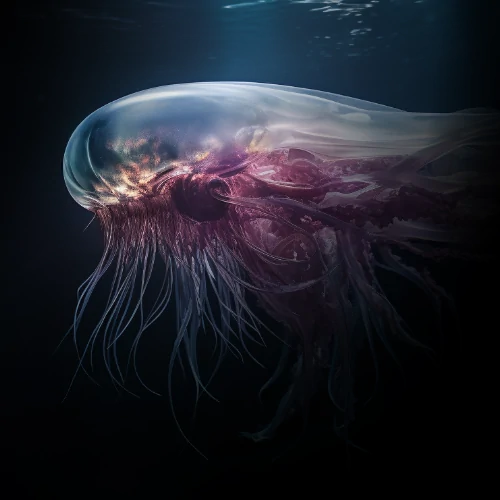Deepwater Leviathans
The otherwordly giants of the unfathomable depths
These beautiful creatures were naught but legends for most of our sea-faring history; it's only recently that we've finally discovered that these enigmatic leviathans actually exist.Strange, otherworldly, and exceptionally rare -- Deepwater Leviathans are a massive species of jellyfish that inhabit the unfathomable depths of Cathedris's oceans. They are capable of growing to immense size, are seemingly immortal, and have only ever been seen and studied twice in person; yet eye witness sightings throughout the history of many sea-faring civilizations have been the source of countless myths of giant monsters of the ocean.
Mysteries of the Abyss
The Leviathans grow to be an average of roughly 200m long, with over 70% of that length being their long and tangled mess of tentacles that drift gently behind the massive beasts. They live the absolute majority of their life deep in the ocean, but have very rarely been seen at the surface; only two have ever been seen in modern times.Surface Drifter
For about a week a Deepwater Leviathan was found drifting at the surface, in a cold region of ocean to the north of Artazia known as the Ziatic Sea. The specimen was estimated to be 175m long, and there were several species of sharks caught up and slowly digesting within its tentacles; even a Shallow ocean Stoneshark, which was strange given how far away the Leviathan was from the Stoneshark's natural habitat of warmer shallow waters.Sea-shore Corpse
In the most recent and most beneficial sightings of a Leviathan, one of the massive beasts actually washed up on shore; the only known opportunity for researchers to ever take physical samples of the animal. The massive translucent corpse was partially decayed, having rest on the rocky beach for an unknown amount of time before discovery, and it's thought it could have been around 300m long when it was alive.They don't really prey on anything. They just digest whatever happens to drift into their tentacles.


















Jellyfiiiish. Big jellyfish! Chewy yet snappable is a texture I can feel. Euuugh. XD
That description comes from the one time I tried eating jellyfish :D Never again :D